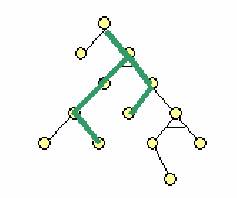Overview
MIT's Oxygen project, and related projects elsewhere, aim to provide a computational environment that both responds to human needs and which dynamically adapts in real time as these needs change. The new generation systems which these projects strive to construct immerse their users in a complex of invisible servers and mobile devices, and provide each user a continuously available, consistent, and user-customized repertoire of high level services even as the user wanders about and available facilities change.
As a tiny example, a user might be involved in a videoconference with a colleague as he wanders about a well equipped campus. As he moves from one room to another, his video may switch from the small LCD display of his handheld to a wall-mounted plasma screen as the latter comes into view; networking technologies might shift between 802.11b and CDMA depending on resource availability, and video may degrade or disappear altogether as communication bandwidth warrants.
Such behavior necessarily requires frequent reevaluation of available alternatives, as well as heuristic compromises to best address the user?s needs with imperfect resources. Conventional techniques for constructing applications, in which top-level function is decomposed into statically-partitioned subfunctions each affixed to a particular API, makes such adaptation exceedingly difficult to program. If there is a change in available resources, it is often insufficient simply to reconsider how to implement the function specified at each API: it is necessary to reconsider the reason that API was selected, and whether an alternative function and API has now become more appropriate.
Approach
We propose a new system semantics in which goals are formalized as a language construct, and used to guide the automatic construction of a component-based system. Semantically, goals are similar to generic procedure calls: they involve a named generic service (the goal name) as well as an arbitrary number of typed parameters. Thus, TeleConference(Victor, Steve) might be a high-level goal whose satisfaction requires a teleconference link between Victor and Steve, each a parameter of type Person.

Unlike procedure calls, however, goals are disembodied from any block of code to be invoked during their execution. Rather, the system approaches the resolution of a goal by searching for one or more techniques, each of which constitutes a recipe for resolving a class of goals. Each technique specifies a pattern to be matched against a candidate goal, optional subgoals that must be satisfied for it to proceed, and code to be run in order to cause an incoming goal to be satisfied once the specified subgoals have been achieved. This semantic is reminiscent of Prolog and related logic languages of the 80s, although the implementation technology surrounding it is quite different.
Each of the techniques is embodied as an object that plays an active role during the resolution process, in effect offering to satisfy the stated goal so long as certain constraints (expressed as subgoals) are met. The resolution process takes the form of a negotiation between a system object (called a context) and a set of applicable technique objects. Typically the context will create and explore a goal tree, heuristically choosing the most satisfactory branch of that tree to be implemented.
Following implementation, however, the goal tree persists as a record of the logic by which implementation choices were made, so long as the goal remains active. As network connections break or new resources become available, the goal tree is reevaluated and alternative implementation choices may be made and implemented in real time.
Publications
A Case for Goal-oriented Programming Semantics
, System Support for Ubiquitous Computing Workshop at the Fifth Annual Conference on Ubiquitous Computing (UbiComp '03)
Authors:
People
- Steve Ward
- Chris Terman
- Umar Saif
- Justin Mazzola Paluska
- Hubert Pham
- Jason Waterman
